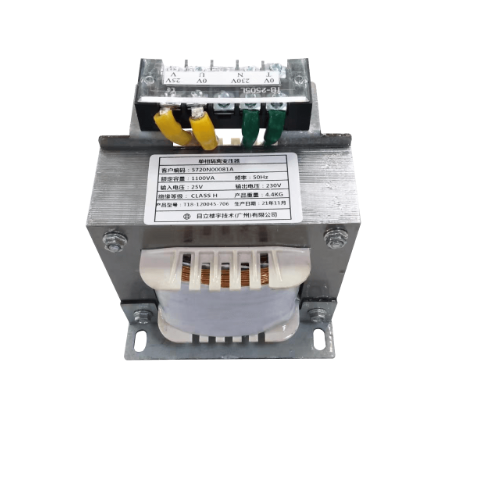News
Site Editor
 Site
https://nfc-transformer.usa18.wondercdn.com/uploads/image/63ed8fecead5c.png
In this beginner's guide, we'll explore the basics of EI core transformers, their advantages and disadvantages, as well as their common applications.
Site
https://nfc-transformer.usa18.wondercdn.com/uploads/image/63ed8fecead5c.png
In this beginner's guide, we'll explore the basics of EI core transformers, their advantages and disadvantages, as well as their common applications.
Understanding the Basics of EI Core Transformers: A Beginner's Guide
Views: 1795
Author: Site Editor
Publish Time: 2023-05-16
Origin: Site
Transformers are essential components in modern electrical and electronic systems, allowing for efficient power transfer and voltage regulation. One common type of transformer is the EI core transformer, which features a laminated steel core in an E-I shape with two outer legs and a central leg. In this beginner's guide, we'll explore the basics of
EI core transformers, their advantages and disadvantages, as well as their common applications.
What are EI core transformers?
EI core transformers are a type of transformer that have a core made up of two E-shaped laminated steel pieces with a central I-shaped piece, hence the name EI. The coils of wire are wrapped around the center leg and the two outer legs of the core, forming a magnetic circuit. When AC voltage is applied to the primary winding, it creates a magnetic flux in the core that induces a voltage in the secondary winding. This voltage can be stepped up or down depending on the ratio of turns between the primary and secondary windings.
Advantages and disadvantages of using EI Core Transformers
Advantages:
-
EI core transformers are relatively simple and cost-effective to manufacture compared to other types of transformers.
-
They offer good magnetic coupling between the primary and secondary windings, which allows for efficient energy transfer and low losses.
-
They have a wide range of power ratings and can handle high currents and voltages.
-
They are commonly available in standard sizes and shapes, which makes them easy to source and use in various applications.
Disadvantages:
-
They may produce audible noise due to magnetostriction, which can be an issue in certain applications.
-
The laminated steel core can develop eddy currents and hysteresis losses, reducing efficiency at higher frequencies.
-
The magnetic field can leak outside the core, causing interference with nearby electronics.
-
They may require additional shielding to reduce electromagnetic interference (EMI).
Common applications of EI Core Transformers
EI core transformers are used in a variety of electrical and electronic devices, such as:
Power supplies: EI core transformers are used to step down the input voltage to a lower voltage suitable for powering the device's circuits.
Audio equipment: EI core transformers are used in audio amplifiers to match the impedance of the output stage to the speaker load.
Lighting: EI core transformers are used in low-voltage halogen lighting systems to step down the voltage from the mains supply.
Industrial control systems: EI core transformers are used for isolation and signal conversion in various industrial control applications, such as motor speed control and instrumentation.
In conclusion
By knowing their advantages, disadvantages, and common applications, you can choose the right transformer for your project and ensure optimal performance. So, start exploring the world of EI core transformers today and discover how they can power up your innovations! For more information and expert guidance, don't hesitate to
contact us or check out our products.

